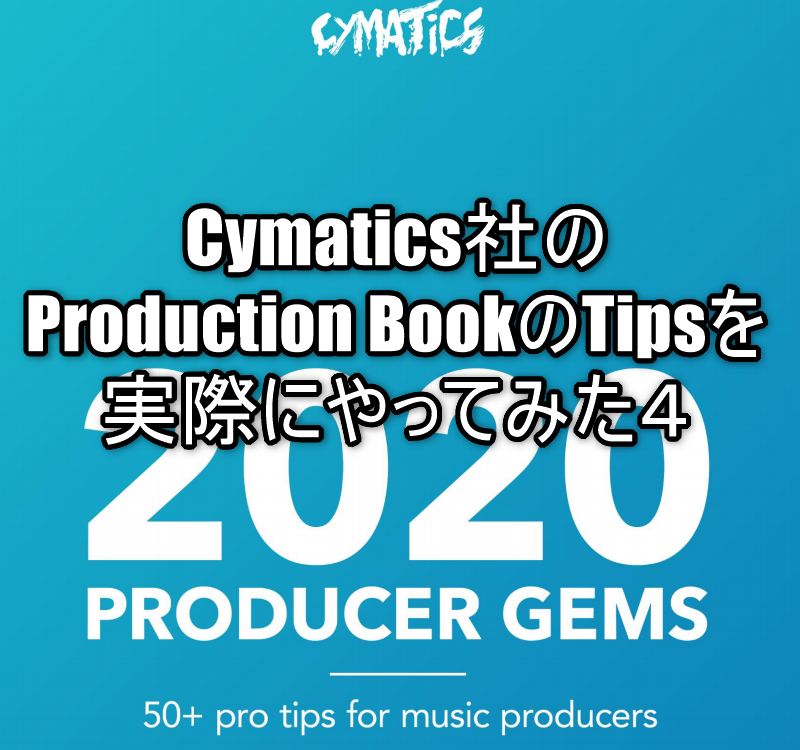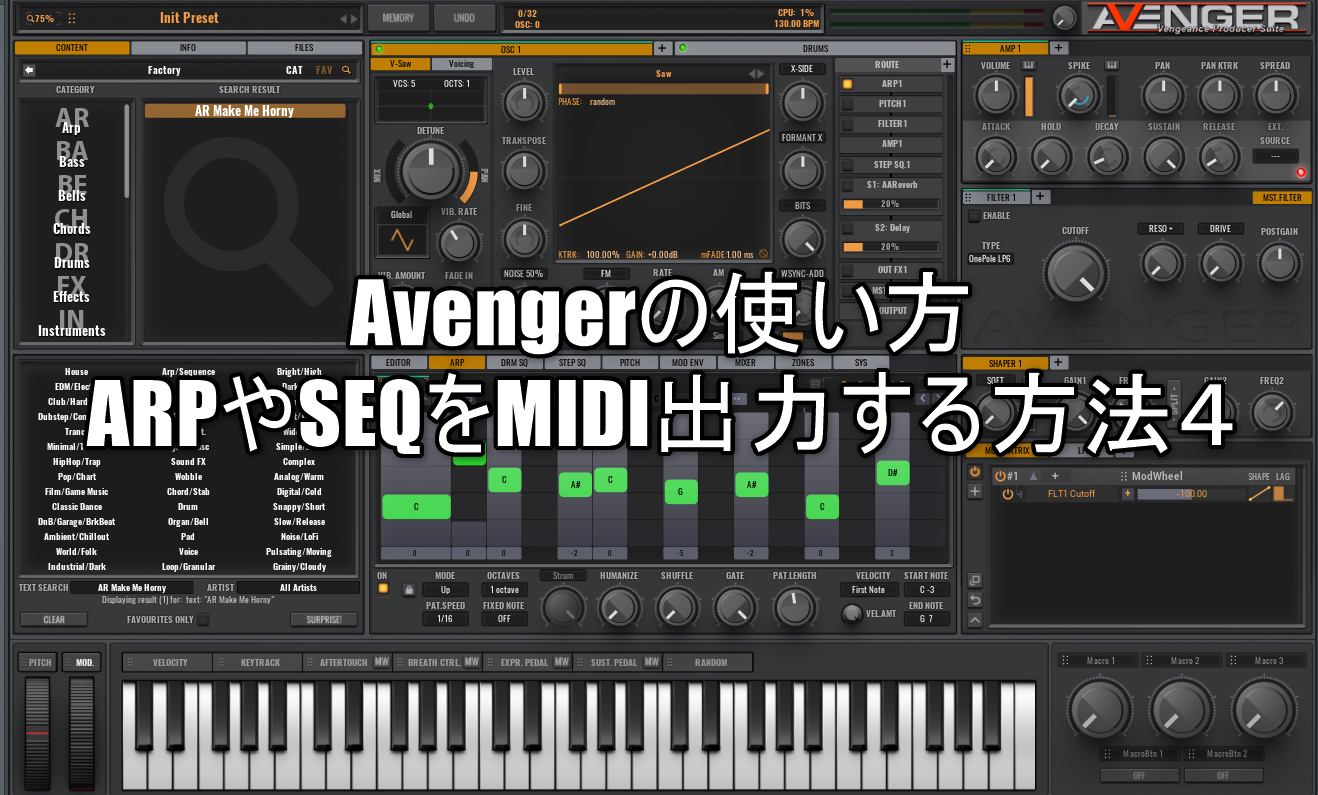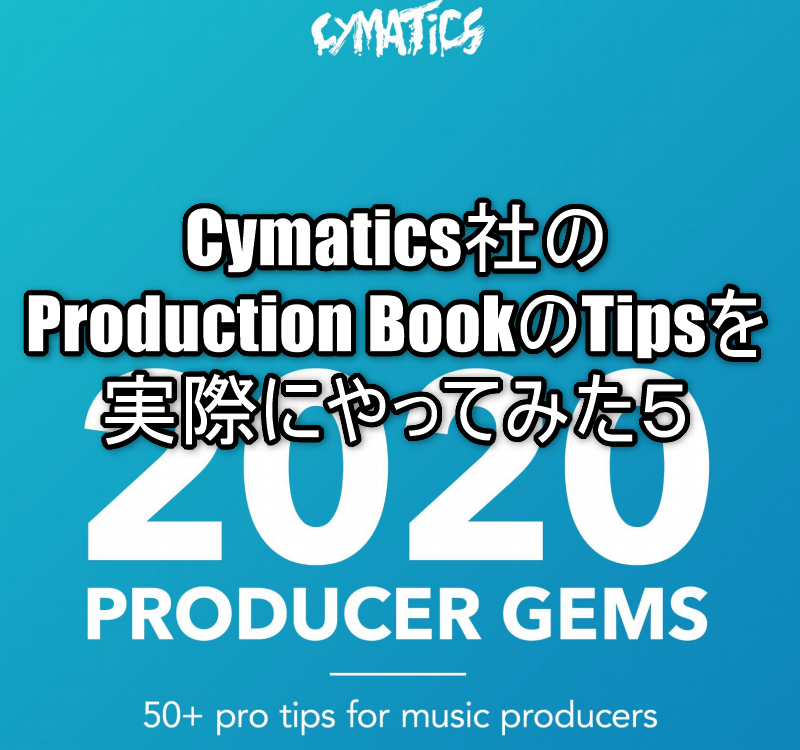- I actually tried the tips of Cymatics' Production Book XNUMX
- Tips4: Humanize the drum using the syncopation method
- Tips5: Quantize the progress of MIDI and don't bring the melody to life
- Tips6: Add bounce to percussion instruments using delay
- Tips7: Use "groove pool" (Ableton users only)
- Tips8: Experiment with vintage / analog equipment to add characters
- Tips9: Record vocal samples using your phone's "Voice Note" app
- Tips10: Don't make your tracks too complicated, keep them simple!
- Tips11: Add vibrato / flutter to emulate an analog sound
- Tips12: Expand code notes to increase characters
- Tips13: Carefully match your sound choices
- Tips14: Repeat chord progressions at baseline
- Tips15: Use silence to build drop tension
- Tips16: Pan the sound!
- Tips17: Examine other successful music and learn what works
- Tips18: Adjust the level of each sound individually before adding FX
- Tips19: Adjust the drums to match the same keys as the other sounds
I actually tried the tips of Cymatics' Production Book XNUMX
I'm yosi, the administrator of Chillout with Beats.
The original story is the contents of the free Production Book released the other day by Cymatics.
Since 54 tips are written, it looks good, so I picked it up and wrote it in a series.
(The momentum to write everything while saying)
Some of the tips that are not suitable for making demos are only translations.
Tips4: Humanize the drum using the syncopation method
If you want your music to have more rhythm and realism,
Examine the syncopation. According to Merriam Webster, syncopation is "a
Temporary displacement of regular weighing accents in music
Usually by emphasizing weak beats. "
More simply, this means adding offbeat notes.when I heard
For drummer play, they usually do not play fully quantized rhythms.That
Usually it has many swings.
Tips5: Quantize the progress of MIDI and don't bring the melody to life
Don't assume that all notes need to be at the same velocity or completely quantized on the grid.Try placing your notes just before or after the grid.For example, in this photo, the piano player's "strum" is duplicated by offsetting each note.

Tips6: Add bounce to percussion instruments using delay
Try delaying all the hi-hats and other percussion for 5 to 15 ms.This is an easy way to add subtle grooves to your beats, without having to adjust the position of every note individually, as mentioned in the last tip.
Tips7: Use "groove pool" (Ableton users only)
If you're using Ableton, try using "Groove Pool".This is a very easy way to give your drums a classic quirky boom-bop sound (Professional Tip: Check out the MPC folder).

Tips8: Experiment with vintage / analog equipment to add characters
Look for older equipment with downgraded sounds like cheap tape recorders and use them to record percussion-like samples.
A good example of this is to use a high fidelity main drum, such as a kick or snare, and use low fipercussion to add contrast to the main drum.You can also use the voice note app on your mobile phone for this.
Tips9: Record vocal samples using your phone's "Voice Note" app
Extending the previous tip, the voice memo app on your phone is an amazing tool.You can save the melody idea later and record a sample. I've heard that recording vocals on the iPhone gives great results.
The important thing is to record at the right volume level.Phone mics aren't as carefully recorded as they are with real mics, which makes them unpopular.
Tips10: Don't make your tracks too complicated, keep them simple!
The less, the less often you use, and make sure they are all high quality and intentional.
Many of the best beats and songs are less than 10-15 tracks.This is especially
Applies when creating music for vocals.Vocalists need room to write on the beat.
Tips11: Add vibrato / flutter to emulate an analog sound
Adding flutter / very slow vibrato to basically any sound is a great way to make it a more vintage sound.
SketchCassetteYou can do this with a plug-in like, but it's a good idea to record the melody to tape, as it gives you a more realistic vintage sound.
Tips12: Expand code notes to increase characters
Minor 7, 9, 11 are very useful.When creating a basic triad chord, try adding these extended notes to add a character to your chord progression.
Tips13: Carefully match your sound choices
Please select a characteristic sample.You don't have to be super clean to get a good sound.Sometimes the winding 808 is exactly what the song needs (for example, listen to Trippie Redd's “Dark Knight Dummo”).
Tips14: Repeat chord progressions at baseline
Use baselines to improve code flow.Real bass guitarists sometimes play notes to guide you to the next chord, so try to reproduce it even if you're using a sub-bass.

Tips15: Use silence to build drop tension
Take advantage of the silence.If the silent part of the beat is cut off a little, the tension and liberation will increase and the song will become more interesting.
For example, when I listened to Pascaal's "Drowning In You," the beats were constantly cut and returned, making them memorable since I first heard them over six years ago.
Tips16: Pan the sound!
Bread is one of the most underrated tools.You can use it to add stereo, depth, and clean up your mix.
Tips17: Examine other successful music and learn what works
Listen, listen, listen.Listening to music every day is one of the best things you can do as a producer, but it's important to be active.
Don't be afraid to play a small section of the song 20 times in a row and study exactly what they are doing.
Tips18: Adjust the level of each sound individually before adding FX
If the volume alone can make the mix sound pretty good, that's right.Once you have the right level of mix, you need to use tools such as EQ and Comp.
Tips19: Adjust the drums to match the same keys as the other sounds
Try adjusting the drums to the keys of the song. If the Kick and 808 are on the same key, it is much easier to use the Kick and 808 together.



Comment